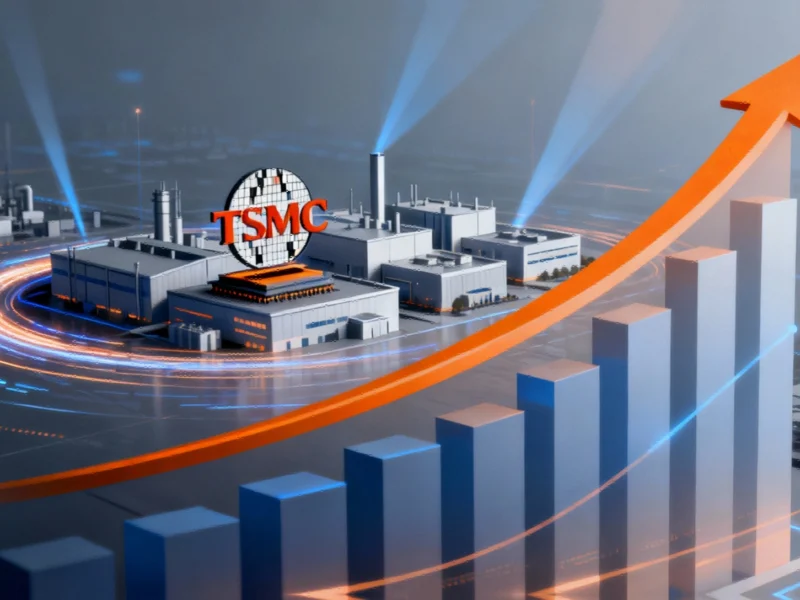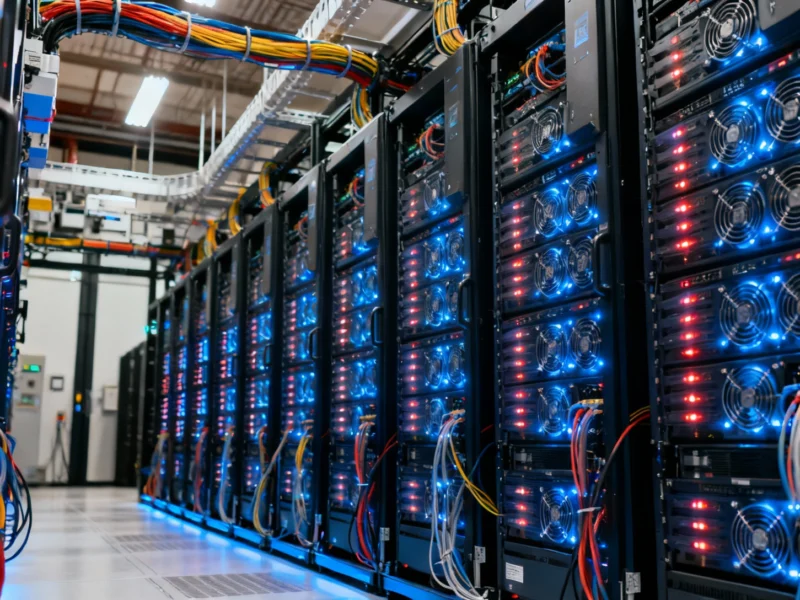Taiwan Semiconductor Manufacturing Company (TSMC), the world’s largest contract chipmaker, announced remarkable financial results for the July-September quarter, with net profit surging nearly 40% year-over-year to reach a historic high. The company’s performance significantly exceeded market expectations, driven primarily by unprecedented demand for artificial intelligence applications across multiple industries.
TSMC reported a net profit of 452.3 billion new Taiwan dollars ($15 billion), marking one of the most substantial quarterly performances in semiconductor industry history. This impressive growth trajectory reflects the company’s strategic positioning in the global technology ecosystem, particularly as AI-driven computing requirements continue to accelerate across consumer and enterprise markets.
Strategic Expansion Amid Global Supply Chain Realignment
The chip manufacturing giant has been actively diversifying its production footprint through substantial international investments. With commitments exceeding $100 billion in the United States alone, including new fabrication facilities in Arizona, TSMC is building resilience against geopolitical uncertainties and trade tensions. This expansion strategy complements the company’s existing $65 billion investment pledge and represents a significant shift in global semiconductor manufacturing geography.
Industry analysts from Morningstar emphasized that “demand for TSMC’s products is unyielding,” noting the company’s dominant market position provides substantial insulation against potential tariff impacts. The firm’s technological leadership in advanced node manufacturing has made it an indispensable partner for leading technology companies, including Apple, which recently revolutionized professional devices with its M5 chip manufactured by TSMC.
AI Ecosystem Driving Sustained Growth
The artificial intelligence boom has created a virtuous cycle for TSMC’s business, with multiple sectors simultaneously increasing their computing requirements. From cloud infrastructure to edge devices, the demand for advanced semiconductors continues to outpace supply. This trend is evident across the technology landscape, as companies like Microsoft integrate AI capabilities throughout their product ecosystems.
Nvidia, another key TSMC customer, has seen explosive growth in its AI accelerator business, further driving demand for TSMC’s advanced packaging and manufacturing technologies. The symbiotic relationship between AI innovation and semiconductor manufacturing has positioned TSMC at the center of the digital transformation sweeping across global industries.
Manufacturing Excellence and Technological Leadership
TSMC’s success stems from its unwavering focus on manufacturing excellence and continuous technological advancement. The company maintains a significant lead in process technology, particularly in the 3nm and upcoming 2nm nodes, which are critical for next-generation AI applications. This technical superiority has created high barriers to entry for competitors and ensures TSMC remains the preferred manufacturing partner for the world’s most demanding semiconductor designs.
The company’s revenue growth of 30% year-over-year in the last quarter demonstrates its ability to capitalize on the structural shift toward AI-optimized computing. This performance stands in contrast to other industrial sectors, where companies like Snap-on have had to navigate challenging market conditions to maintain growth trajectories.
Global Partnerships and Strategic Alliances
Beyond its manufacturing capabilities, TSMC has cultivated deep relationships with technology partners across the ecosystem. The company’s collaborative approach to technology development has enabled rapid innovation cycles and ensured alignment with evolving market requirements. This partnership model mirrors successful approaches seen elsewhere in the industry, such as the recent strategic alliance between RS and DP Gayatri that aims to leverage complementary strengths.
TSMC’s global expansion strategy also reflects broader industry trends, where companies are seeking to optimize their operational footprints. Similar to how Chobani secured substantial funding to support growth initiatives, TSMC’s investments in international manufacturing capacity represent a strategic response to evolving market dynamics and customer requirements.
Future Outlook and Industry Implications
Looking forward, TSMC’s leadership position appears secure as AI workloads continue to diversify and intensify. The company’s technological roadmap and manufacturing capacity expansions position it to capture growth across multiple computing domains, from data center infrastructure to consumer devices. Industry observers expect the AI-driven demand cycle to remain robust through 2025 and beyond.
The efficiency gains from AI adoption are becoming increasingly evident across supply chain and logistics operations, where customs brokers are leveraging artificial intelligence to optimize tariff calculations and reduce costs. This broader adoption of AI technologies across traditional industries ensures sustained demand for advanced semiconductors, reinforcing TSMC’s central role in the global technology value chain.
As geopolitical considerations continue to influence semiconductor policy, TSMC’s balanced approach to manufacturing localization while maintaining technological leadership provides a template for navigating complex international business environments. The company’s record performance demonstrates that technological excellence and strategic foresight remain the fundamental drivers of success in the semiconductor industry.
Based on reporting by {‘uri’: ‘manufacturing.net’, ‘dataType’: ‘news’, ‘title’: ‘Manufacturing.net’, ‘description’: ‘Manufacturing.net provides manufacturing professionals with industry news, videos, trends, and analysis as well as expert blogs and new product information.’, ‘location’: {‘type’: ‘place’, ‘geoNamesId’: ‘5261457’, ‘label’: {‘eng’: ‘Madison, Wisconsin’}, ‘population’: 233209, ‘lat’: 43.07305, ‘long’: -89.40123, ‘country’: {‘type’: ‘country’, ‘geoNamesId’: ‘6252001’, ‘label’: {‘eng’: ‘United States’}, ‘population’: 310232863, ‘lat’: 39.76, ‘long’: -98.5, ‘area’: 9629091, ‘continent’: ‘Noth America’}}, ‘locationValidated’: False, ‘ranking’: {‘importanceRank’: 482874, ‘alexaGlobalRank’: 270100, ‘alexaCountryRank’: 105425}}. This article aggregates information from publicly available sources. All trademarks and copyrights belong to their respective owners.



